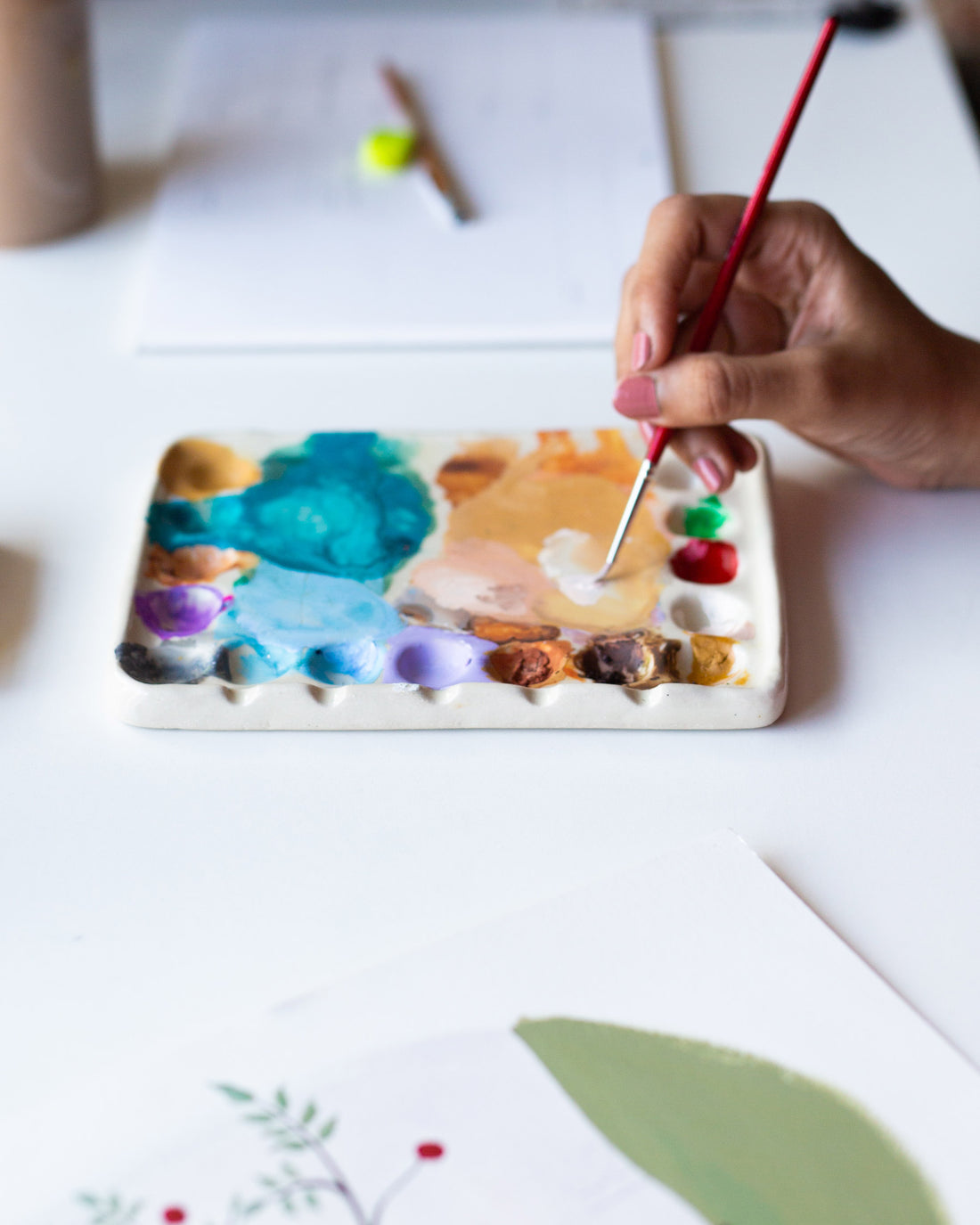Mixing Realistic Skin Tones Using Only Primary Colours

Share
If you are new to art or an aspiring artist, painting people might probably be something you are apprehensive about. From getting the right skin tone to getting the features and differentiations right, it might sound very complicated and even difficult but practice makes perfect and I’m here to get you started.
In this video, I have gone into how you can mix very realistic skin tones by using only the primary colours along with black and white. This is not a tutorial but a mixing technique video and so I’ve also gone a little into colour theory so you understand how colours work and interact with each other. This is great for beginners because this helps you learn and experiment more with colours which is not only fun but also great for your growth as an artist.
I’ve also gone into how you can use colours like burnt sienna, yellow ochre and burnt umber to mix skin tones more easily but I highly recommend that you start with the primaries to your basics strong and also have some fun playing with colours!
What you’ll need
You’ll need yellow, blue, red, black, and white colours, a colour palette, a brush, a rag or tissue to dab off excess water/paint, and a piece of paper to swatch as you mix your colours.
The Technique
If you’ve ever shopped for makeup then you’d know that most skin tones have either warm or cool undertones and occasionally a bit of both, which we call neutral undertone. To achieve the right skin tone you will need to understand its undertone and how you can achieve it. In the video, I’ve shown how you can create a basic colour wheel to understand complementary colours and how you can use it to offset or balance the undertones and achieve your desired skin tone.
Once you get this down, it’s just a matter of playing around with the colours till you achieve the skin tone you are looking for. The trick, especially with mediums like Gouache, is to keep swatching your colours as you mix them because the colours tend to look a little different when they dry out.
For you
If this video got you interested in colour theory and you want to learn more about colours, pigments, and how they interact with each other or if you’d like to learn to mix an endless number of colours by investing in just a few tubes of paint, then I’ve got a short yet extensive beginner-friendly course on colour theory that you must check out!
If you are an absolute beginner to painting and want to give Gouache art a try, I have a course that shows you everything you need to know to get started and paint your first Gouache masterpiece.

